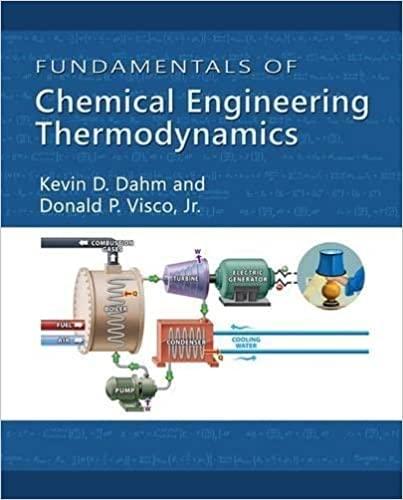The Diels-Alder reaction is a reaction mechanism in which a diene (a compound with two double bonds)
Question:
The Diels-Alder reaction is a reaction mechanism in which a diene (a compound with two double bonds) and an alkene (a compound with a double bond) combine to form a ring. Perhaps the simplest example is the combination of 1,3-butadiene and ethylene to form cyclohexene:
C2 H4 + C4 H6 ↔ C6 H10 5 mol/s each of ethylene and 1,3-butadiene enter a reactor. The reaction is carried out in the vapor phase. Model the reaction mixture as either an ideal gas or an ideal mixture of real gases, as appropriate for the conditions of the reactor.
A. The entering ethylene and butadiene are each at T = 25°C and P = 1 bar, but the reactor is maintained at T = 300°C and P = 1 bar. If the exiting mixture is at equilibrium, find the composition of the exiting stream and the rate at which heat is added to the reactor
B. The entering ethylene and butadiene are each at T = 300°C and P = 5 bar, and the reactor is also maintained at T = 300°C and P = 5 bar. If the exiting mixture is at equilibrium, find the composition of the exiting stream and the rate at which heat is added to the reactor.
C. The entering ethylene and butadiene are each at T = 300°C and P = 1 bar, and the reactor is adiabatic and maintained at P = 1 bar. Find the composition and temperature of the exiting stream. .
Step by Step Answer:

Fundamentals Of Chemical Engineering Thermodynamics
ISBN: 9781111580704
1st Edition
Authors: Kevin D. Dahm, Donald P. Visco





